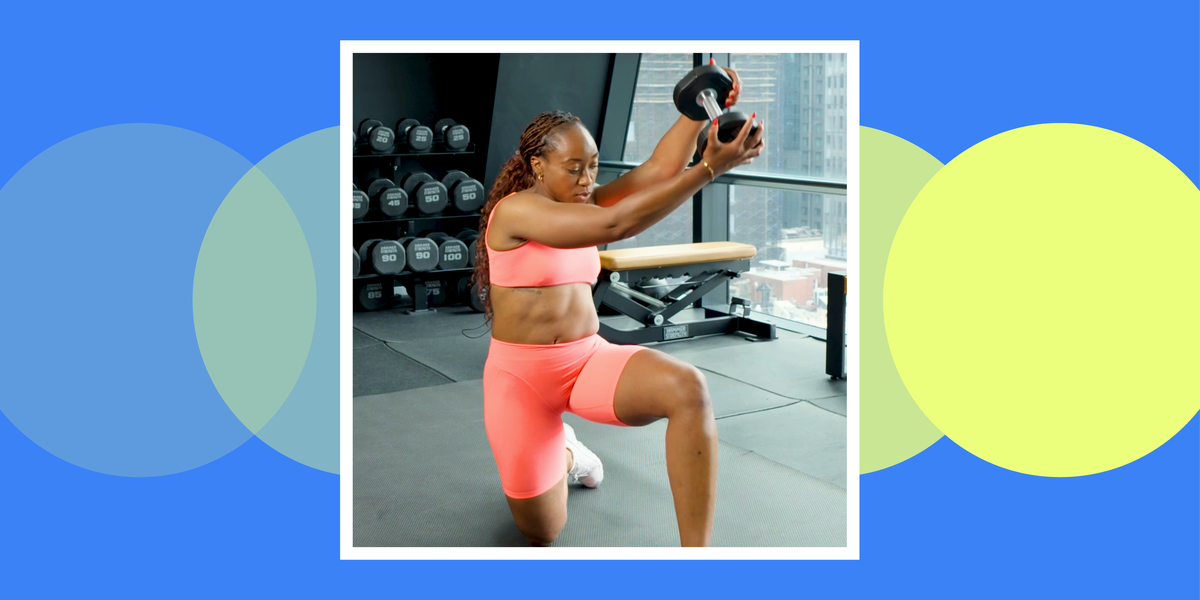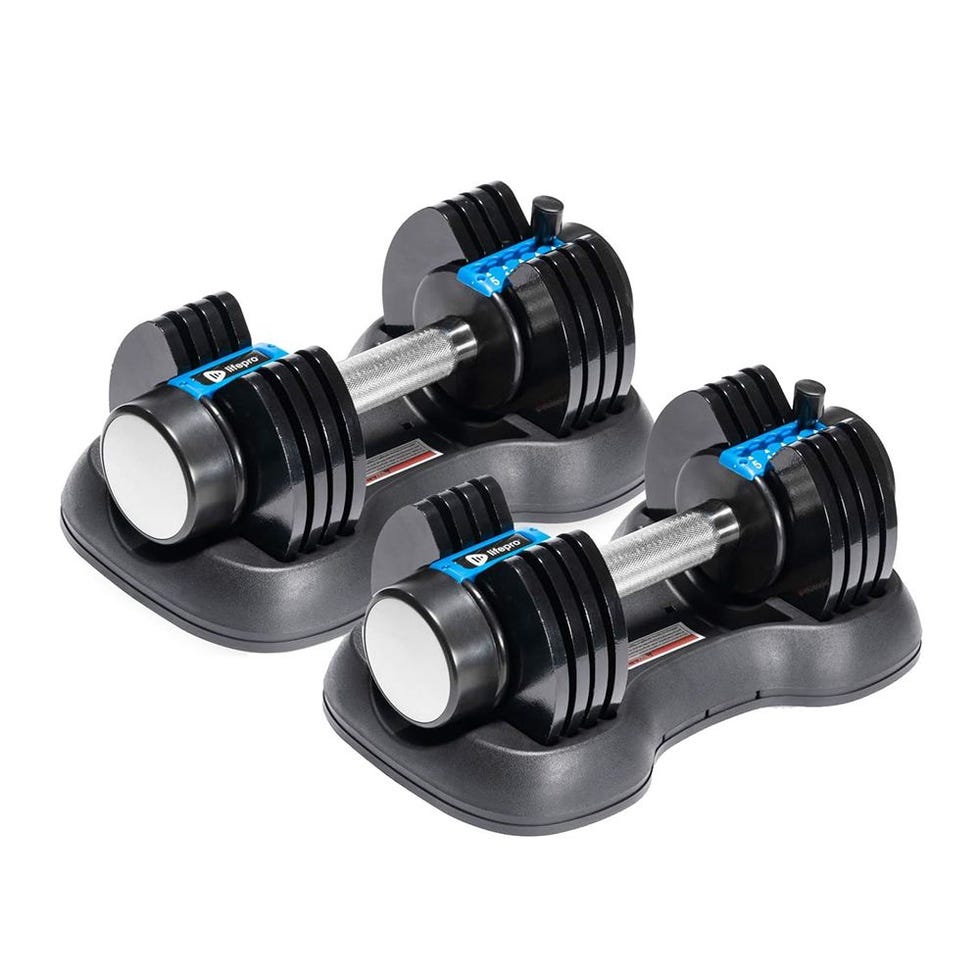You’re 30, flirty, and thriving—but are you strength training?
With all the changes and added responsibility that comes with this decade, you’re probably getting a lot busier and therefore have less time for yourself and your workout routine. But, your 30s are the perfect age to build a consistent one.
“This is a really good decade to hone in on future-proofing your body and thinking about longevity,” says Gabrielle Savary, CPT, a fitness coach and member of the WH Strength In Diversity class of 2024. Basically, what you do now will not only make daily activities like getting off the floor after playing with your kids or carrying in that new couch easier, it’ll also have an effect on your strength in your 60s, 70s, and 80s.
At 30, two critical reserves start to diminish: your bone mass and your muscle mass. (Women lose anywhere from three to five percent of their muscle mass each decade after their 30s, according to the U.S. Department of Health and Human Services.) The best way to slow down—or prevent—that process? Strength training.
That’s why Savary created a lineup of the six most important exercises someone in their 30s should do. They’re all functional movements (as in, they mimic real-life actions, making it that much easier when you do them outside of the gym). “Master these six moves in your 30s and you’ll have a strong foundation for life,” she says.
6 Essential Strength Exercises To Maser In Your 30s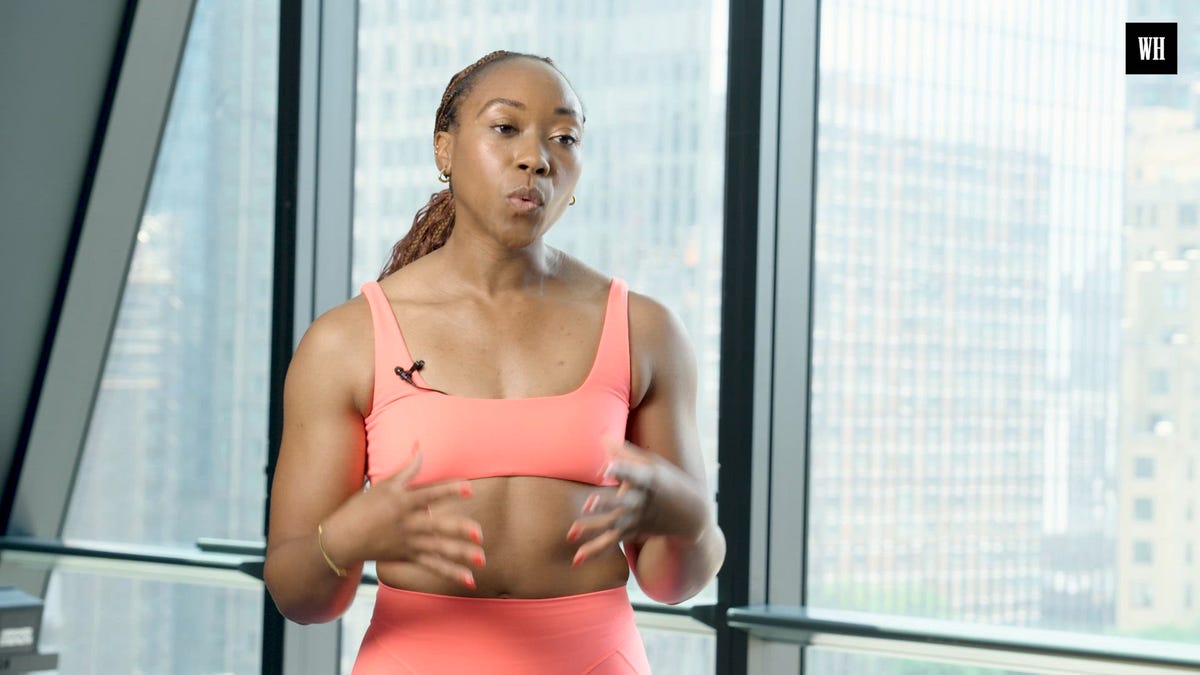
Meet your trainer: Gabrielle Savary, CPT, is a fitness coach and founder of Grow With Gab, a champion bodybuilder, and member of the WH Strength In Diversity class of 2024.
Try Them As A Workout
Equipment: Medium, heavy dumbbells
Instructions: Incorporate these six moves into your strength training routine regularly. Or, to do these moves together as a standalone workout, move through each exercise for 8-15 reps before moving to the next. Repeat the circuit 2-3 times, resting between exercises and sets as needed.
Dumbbells We Recommend
Best Overall Dumbbells
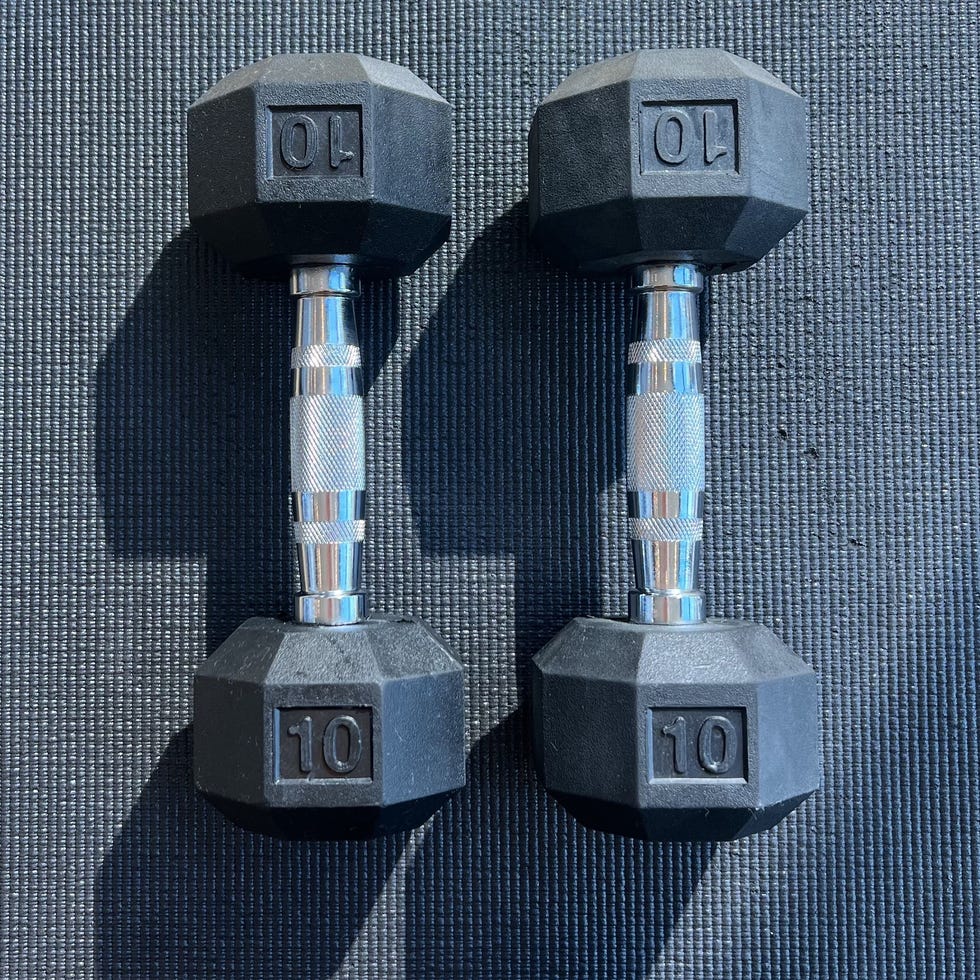 Spri Hand WeightsCredit: Talene Appleton
Spri Hand WeightsCredit: Talene Appleton
Best Beginner Dumbbells
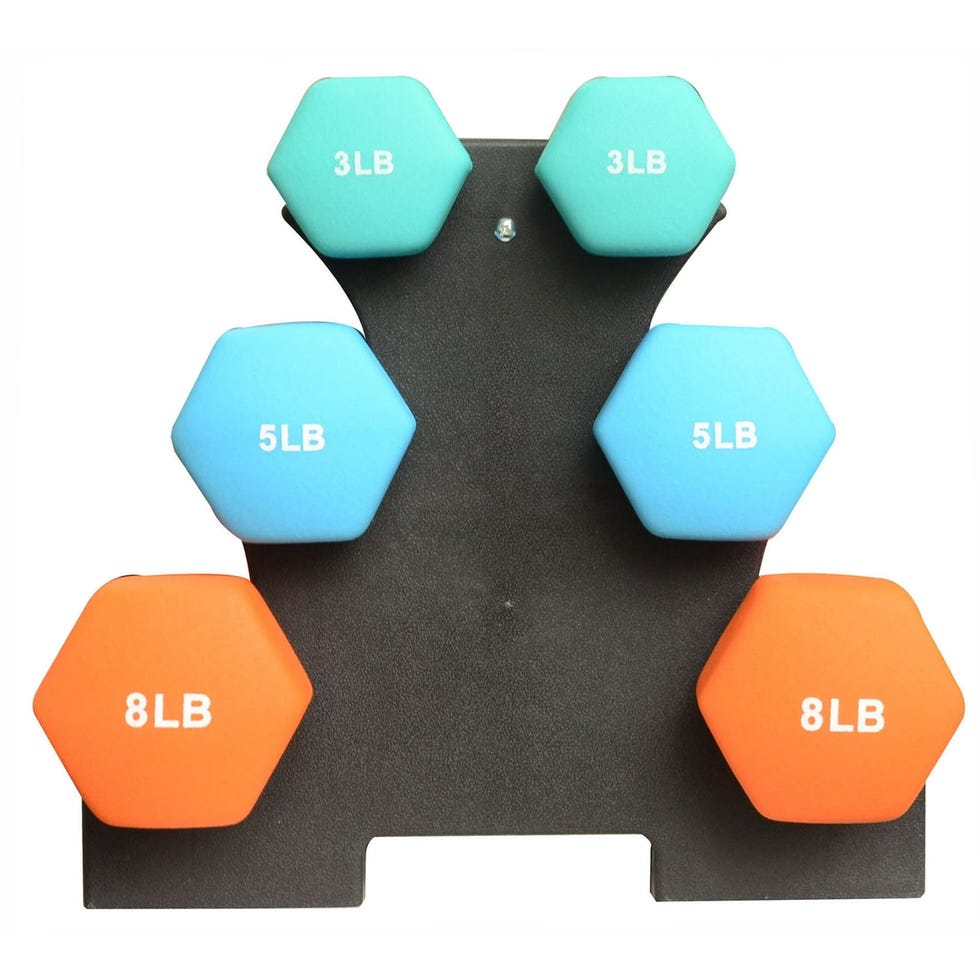 BalanceFrom Coated Dumbbell Set
BalanceFrom Coated Dumbbell Set
Best Adjustable Dumbbells For Beginners
Now 17% Off
Best Adjustable Dumbbells For Heavy Lifting
 Powerblock Elite Exp Adjustable DumbbellsCredit: Monica Dzik
Powerblock Elite Exp Adjustable DumbbellsCredit: Monica Dzik
Romanian Deadlift (RDL)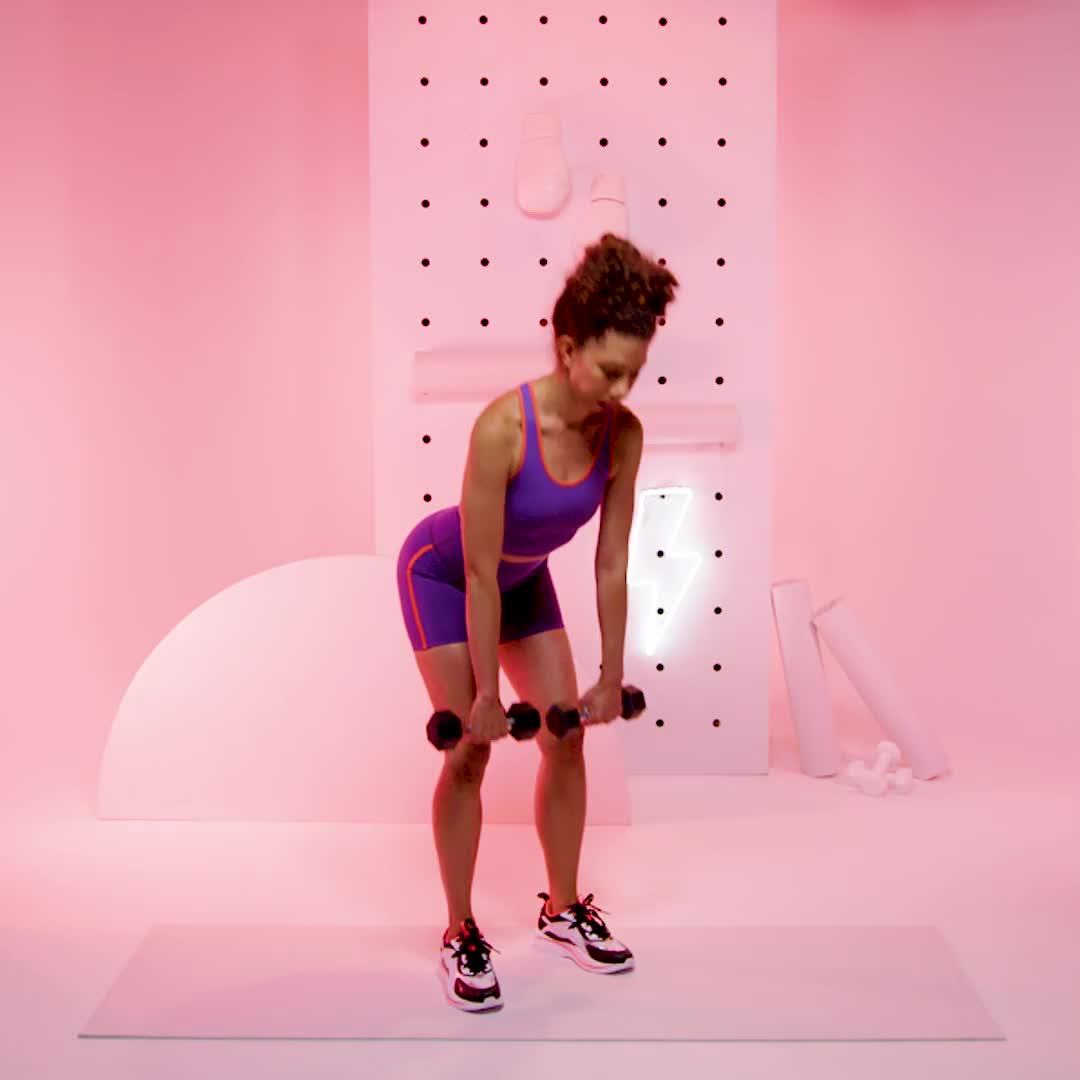
How to:
Stand with feet hip-width apart and hold a pair of dumbbells in front of your thighs.Keeping a micro bend in your knees and core engaged, and hinge at the hips to lower the weights down the front of your legs. Squeeze your shoulder blades together to keep your back flat, and engage your core throughout.Lower only as far as you can without letting your spine round, keeping the weights close to your shins.Pause at the bottom, then squeeze your glutes and drive through the heels to return to standing. That’s 1 rep.
Why it’s effective: The Romanian deadlift is a great way to load the spine, which helps maintain bone density—something that starts to decline in your 30s. Plus, it effectively targets and builds your posterior chain, which includes your glutes, hamstrings, core, and back.
Split Squat

How to:
Stand with hands at sides and feet staggered (left foot in front of body and right foot behind, right heel high).Bend both knees and lower down until both legs form 90-degree angles. Gently tap back knee to the floor.Pause and then push through both feet to return to start. That’s 1 rep.
Why it’s effective: Split squats build unilateral (or single) leg strength, which is key to fixing discrepancies between them. It also helps with ankle and knee stability and maintaining balance (which, it’s never too early to start thinking about fall prevention). As long as you’re properly challenging yourself with the weight, a split squat will also build muscle mass.
Farmer’s Carry
How to:
Stand with feet hip-width apart and weights at outside of ankles. Hinge hips back and bend knees, keeping back flat.Engage core before reaching down to grab weights.After gripping weights, begin to stand tall by driving heels into floor, maintaining a tight form. Once in full standing position, tighten armpits and pull shoulders back to activate muscles.Finally, begin to take small steps forward, trying not to sway at the hips. Maintain strong grip and form. (If you’re returning in opposite direction, set the weights down, turn around, and then grab the weights again.) Walk for about 50 paces. That’s 1 round.
Why it’s effective: A farmer’s carry is a great way to build up your grip strength—and grip strength is a reflection of your overall muscle health. A stronger grip is associated with better bone mineral density and cognitive function, according to a 2019 study in Clinical Interventions in Aging. The study also found that a better grip strength was linked with a lower risk of developing chronic conditions like diabetes and heart disease and a reduced chance of hospitalization or long-term disability, so it has its longevity perks. If you need another benefit: having good grip strength also means you can do heavier lifts, meaning you’ll be able to challenge—and grow—your muscles more effectively.
Glute Bridge March
How to:
Lie on ground with feet flat on floor about shoulder-width apart, knees bent and arms by sides on floor, pressing up into a glute bridge.From here, raise one leg at a time, keeping the stationary leg firmly on the ground and pelvis stable.Keep your core engaged and alternate raising legs, maintaining the lifted butt position. Once you’ve marched on both sides, that’s 1 rep.
Why it’s effective: Glute bridge marches help maintain pelvic floor strength. Your pelvic floor is part of your core and it can make a big difference when it comes to urinary incontinence, including during pregnancy, according to a 2020 study in Porto Biomedical Journal.
Wood Chop
How to:
Kneel on left knee and hold a dumbbell by left outer thigh.Twist your torso and power through the core to drive the weight up and to the right. Control the weight as you slower it back down to the starting position. That’s 1 rep. Complete reps on one side before switching to the other.
Why it’s effective: The wood chop is a rotational movement, which has benefits on practical movements like grabbing something from the back seat of your car and athletic performance. That’s because this move helps build spinal stability, which helps control your movements and even prevent injury.
Push-Up
How to:
Start in a high plank position with feet slightly wider than hip-width apart and thumbs positioned right outside of the chest. Engage core and maintain a neutral spine with gaze between your hands.Lower down, elbows pointing out at 4:30 and 7:30. (Don’t let elbows flare out, but don’t keep them too narrow, either.)Push into hands to press back up. That’s 1 rep.
Why it’s effective: A push-up can be a tough move to master, but so worth it. They’re a full-body challenge, particularly working your core and upper body. They help build your athletic ability and power, but they also might have an effect on longevity. A 2019 study in JAMA Network Open found that men who could complete at least 11 push-ups had increased cardiovascular protection. It’s probably why you’ve heard that Mel Robbins says women should be able to complete 11 push-ups. While it’s a little more nuanced than that, it’s not a bad goal for your 30s.
Get Stronger With A WH+ Workout PlanKeep Leveling Up With WH+
Gabrielle Savary, CPT, is a trainer and founder of Grow With Gab, a champion bodybuilder, and member of the WH Strength In Diversity class of 2024.
Olivia Luppino is an editorial assistant at Women’s Health. She spends most of her time interviewing expert sources about the latest fitness trends, nutrition tips, and practical advice for living a healthier life. Olivia previously wrote for New York Magazine’s The Cut, PS (formerly POPSUGAR), and Salon, where she also did on-camera interviews with celebrity guests. She’s currently training for the New York City marathon.

